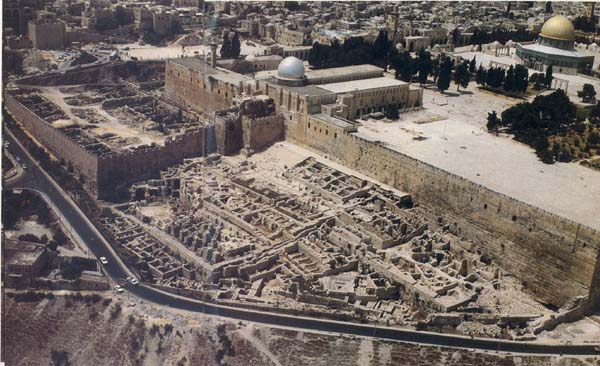Image Details

Zev Radovan
The Temple Mount excavations, directed by Benjamin Mazar, exposed nine acres of Jerusalem’s history—dating from the Iron Age, through Herodian, Byzantine, Turkish, Crusader, Mameluke, and even Ottoman times. Yet, relatively few remains from the First Temple Period (tenth to sixth centuries B.C.) came to light.
Now, author-archaeologist Eilat Mazar, granddaughter of Benjamin Mazar, has discovered dramatic evidence of First Temple Jerusalem, including a structure that may be a gatehouse in the city wall, leading to the royal quarter. The gatehouse was discovered in the area close to and within the crook of the road at lower left in this photo. This area lies on the Ophel—a narrow ridge connecting the Temple Mount to the north, top right, with the City of David, out of sight, bottom left.
